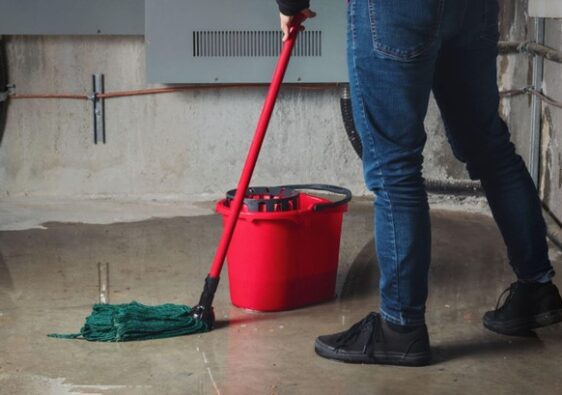Lush, vibrant green grass. It’s every homeowner’s dream for their front lawn. But if you’re reading this, we’re guessing your lawn is looking less than luscious?
You may be watering and mowing, but still finding that your grass goes yellow and lackluster. What can you do to get a healthy green lawn that you can be proud of? What maintenance is needed to keep it looking good all year round?
Join us as we explore 5 hacks on how to make grass green.
1. Know Your Soil Type
Want to know how to make your lawn green and thick? You need to understand your soil type.
There are a few ways to do this. You can check out your local area online. The USDA maintains a log of soil surveys for the whole country.
There are also some simple but effective home tests that you can try. First of all, take a handful of soil and squeeze it. If it holds its shape and crumbles when poked, it’s loam soil.
If it holds its shape and resists a good poking, it’s probably clay. If it falls apart when you open your hand, it’s sandy soil.
Improving the quality of your soil will help with making your grass greener. To find out exactly what type of soil you have and how to improve it, contact your local cooperative extension service. They can give you advice on how to improve your soil.
2. Water Grass Deeply But Infrequently
Using a sprinkler system is a great way to regularly water your lawn. But did you know that regular, light waterings are probably not doing your lawn any favors?
To make grass green, you need to water your lawn deeply. This will promote root growth. Grass with deep roots is able to access more water and nutrients even during periods of drought or hot weather.
The right amount to water your grass will depend on your soil type, grass variety, and local weather conditions. However, a good rule of thumb is to give your grass an inch of water a week.
You can measure this by placing a few shallow containers on the grass during watering. Water from the sprinkler heads will fill them up as they water the lawn. When they all have an inch of water in, you know you’re good.
This is also a good way to test whether your sprinkler system is watering your grass evenly. If it isn’t, this could account for yellow patches in the grass.
It’s very tempting to overwater grass, but that’s not how to get greener grass. Check your grass with a soil moisture tester. When the top 3 to 4 inches are dry, it’s time for another deep soaking.
When you water your lawn, evaporation is your enemy. Don’t water it during the heat of the day or during very windy weather. The best time is usually early in the morning.
Watering less frequently prevents overwatering. It stops puddles from forming that mosquitos could breed in.
3. Use the Right Fertilizer
No guide on how to get a green lawn would be complete without a word on fertilizer. The key to finding the right fertilizer is knowing your soil type.
There are so many types of lawn fertilizer to choose from it can be overwhelming. The right fertilizer is going to help you to correct the pH of your soil and give it the best chance to soak up vital nutrients.
A well-nourished, healthy grass will be able to make the best use of sunlight. This will result in a beautiful green lawn.
4. Aerate Your Lawn
Your lawn doesn’t just need food and water. It needs air to breathe as well.
In the course of the year, lawns can get pretty compacted. This is especially true if you’ve got kids who love to play on the front lawn. There’s nothing wrong with that, but it means you need to aerate your lawn.
Aerating your lawn means punching lots of little holes into it. This is usually done once a year. The best time of year to do this depends on the type of grass you have.
The easiest way to do it is to rent a lawn aerator. These handy machines pull out little plugs of soil, which you can then leave on top of the grass. They will break down and nourish the soil.
The holes allow fertilizer and water to get down into the roots and help make grass green! You can also use this time for overseeding – that’s how to make your lawn green and thick.
Through the year, a layer of thatch can also build up on your lawn. This is organic material that hasn’t yet broken down and been absorbed by the soil. Use a stiff rake to remove much of this build-up, that the water and nutrients can get through to the grass beneath.
5. Mow For Success
Mowing is mowing, right? Actually, the way you mow your lawn matters more than you may realize!
Lots of people make the mistake of mowing their grass too short. Short grass can’t grow lush and green – you’re constantly removing the part exposed to the sun. This puts the grass under stress.
Aim to remove no more than 20% of the length each time you mow. When you start mowing in spring, only give it a light trim at first. Gradually take off more as the weeks go by until you reach the desired length.
This will help your lawn to get as much nourishment from the sun as possible. That’s how to make grass green!
The Bottom Line: How to Make Grass Green
We hope that you’re now feeling a lot more confident about how to make grass green!
There’s no magic formula, it’s just about good nutrition, watering the right amount, and giving it lots of TLC. If you follow these suggestions, there’s no reason why your lawn shouldn’t be verdant and healthy all year round.
Have you enjoyed these hacks on making grass greener? Head over to our Home Life section. We’ve got lots of cool tips and hacks on how to make the most of your home!



